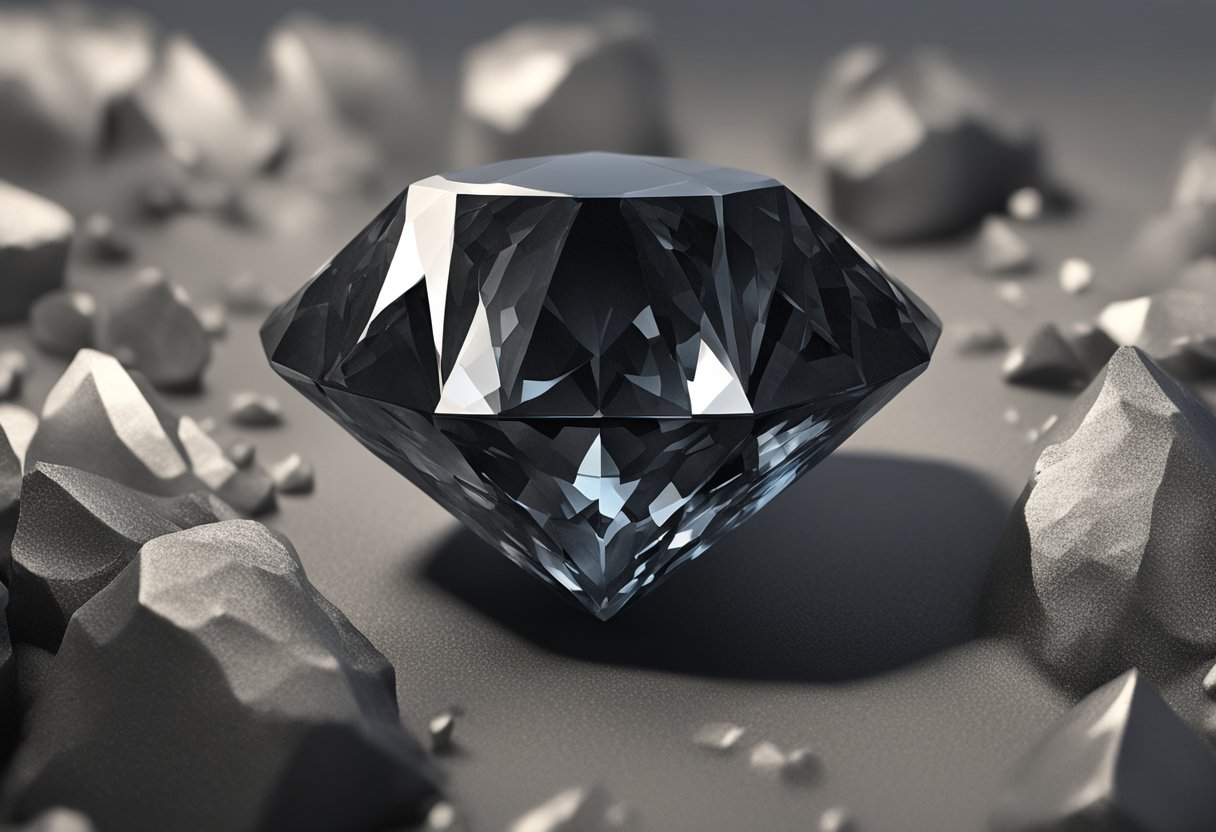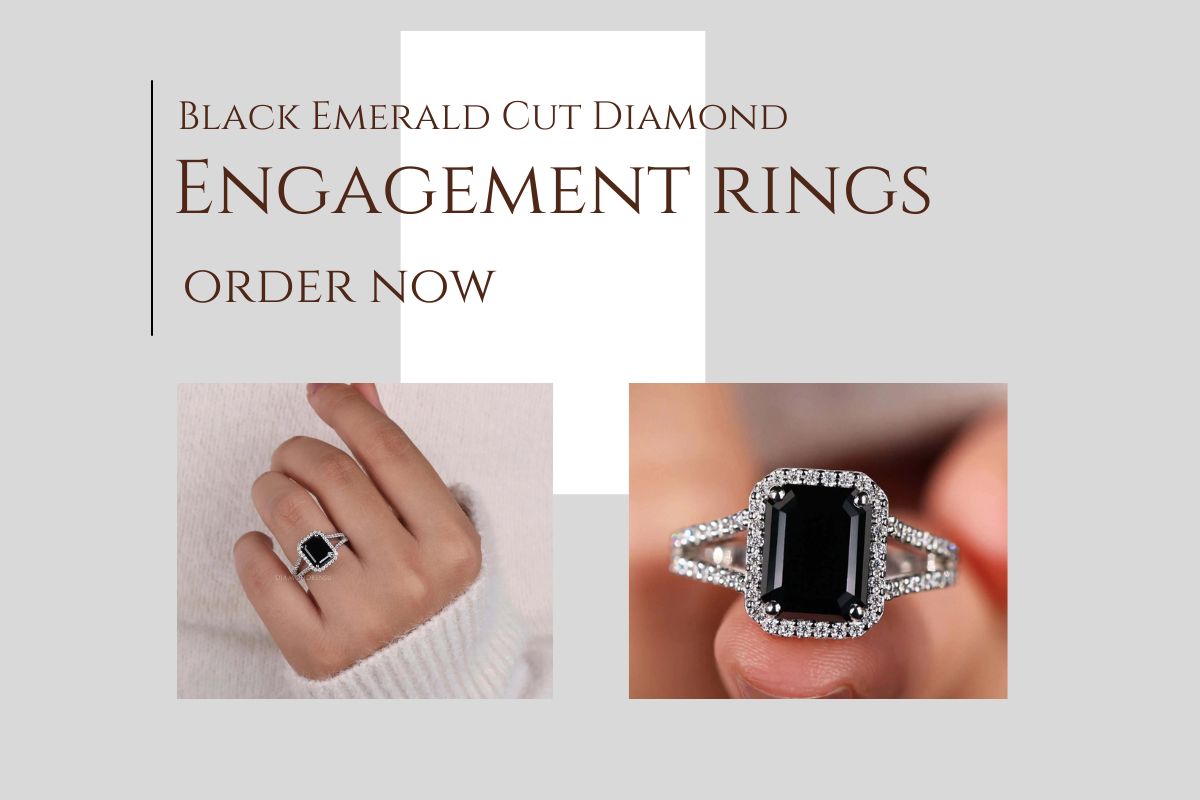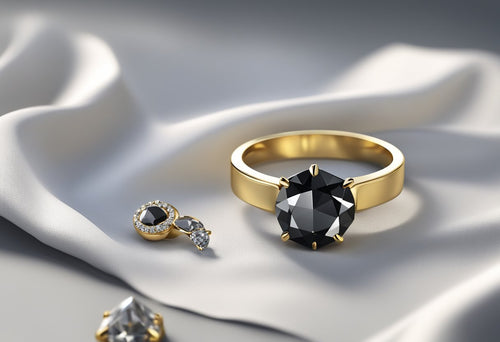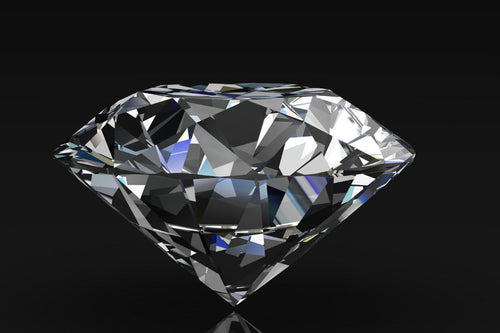Identifying a raw black diamond requires a discerning eye and knowledge about the unique characteristics of these precious stones. I understand that unlike cut and polished diamonds, raw black diamonds, also known as carbonados, present themselves more subtly. Their opaque color and rough texture can easily be mistaken for less valuable stones, making it crucial for one to know what to look for. My experience with gemstones has taught me that evaluating certain qualities such as the diamond's surface luster, hardness, and crystal form can differentiate a genuine black diamond from an imposter.
Raw black diamonds are typically found in alluvial deposits in Central Africa and Brazil, and these exotic locations contribute to the mystique and allure of the gemstone. I can attest that the shape of a rough black diamond might vary, but they generally exhibit a polycrystalline structure that makes them tougher and more difficult to cut than their clearer counterparts. This resilience is a hallmark of black diamonds, causing them to stand out among other minerals. With careful examination, characteristics like surface smoothness, edges, and density become telltale signs of a diamond's authenticity.
By holding a raw black diamond up to light, I look for its distinct translucency or reflective qualities. Although black diamonds are opaque, there's a subtle way that they interact with light that can suggest their identity. Moreover, the heft of a black diamond in my hand is often greater due to its higher specific gravity compared to other look-alike stones. My experience has shown me that these qualitative assessments are crucial steps to confirm a diamond's legitimacy before subjecting it to further tests or appraisal.
Understanding Black Diamonds
As an expert in gemology, I find black diamonds to be fascinating due to their unique properties and formation process. Let me guide you through what sets these gemstones apart.
Origins and Types
Black diamonds, like all diamonds, are formed under high-pressure conditions deep within the Earth's mantle. They are found primarily in two locations: Brazil and the Central African Republic. There are two types of black diamonds: natural black diamonds and treated black diamonds. Natural black diamonds are naturally dark due to the inclusion of graphite during formation, giving them their distinct color. On the other hand, treated black diamonds are regular diamonds that have been subjected to treatments, such as radiation or high temperatures, to induce the black coloration.
Natural Black Diamonds vs Treated
| Aspect | Natural Black Diamonds | Treated Black Diamonds |
|---|---|---|
| Formation | Formed naturally in the Earth's crust under high pressure and temperature. | Enhanced through various treatments like irradiation and heat to achieve desired color. |
| Color | Color is natural and usually uniform, ranging from deep black to grayish-black. | Color is often enhanced to achieve a more consistent, intense black hue. |
| Value | Generally more valuable due to rarity and natural origin. | Less valuable compared to natural black diamonds. |
| Market | Preferred by collectors and enthusiasts seeking authenticity. | Commonly used in commercial jewelry for affordability and availability. |
Natural black diamonds are a rarity and thus more valuable. These gemstones owe their color to a high amount of graphite and other mineral inclusions that absorb light. Treated black diamonds, however, are less expensive due to their man-made enhancement. They start as lower-quality white diamonds that have undergone a color alteration process, often involving heating or irradiation, to achieve the black hue. It's imperative to verify the authenticity and the process a black diamond has undergone, as this drastically impacts its market value.
Carbonado: Unique Characteristics
Carbonado diamonds, also known as "black diamonds," have distinctive characteristics setting them apart from other gemstones. Carbonado tends to have a more porous texture and is tougher due to its polycrystalline structure, which means it's composed of many crystal grains. Interestingly, carbonados are mainly found in Brazil and the Central African Republic, hinting at a complex origin, possibly involving asteroid impacts. The alluring mystery of carbonados, paired with their robustness, makes them a compelling choice for those interested in unusual and storied gemstones.
Physical and Optical Properties

In my exploration of raw black diamonds, I emphasize that their identification hinges on distinct physical and optical traits, which include color, luster, crystalline atomic structure, as well as their specific gravity and density.
Color and Luster
Black diamonds possess a deep, rich color that sets them apart. This hue stems from numerous inclusions—most commonly graphite—that absorb light. Unlike traditional diamonds that exhibit a glittering translucence, the luster of raw black diamonds is more subdued and can often appear nearly metallic due to the high number of these inclusions.
Crystalline Atomic Structure
The atomic crystal structure of raw black diamonds is isometric, meaning atoms bond in a manner where they're equidistant from each other, akin to regular diamonds. This crystalline arrangement gives them their renowned durability on the Mohs scale; they rank at a substantial 10, crowning them as one of the hardest substances.
Specific Gravity and Density
When I measure specific gravity—the ratio of the diamond's density to that of water—I find that black diamonds typically have values near 3.1 to 3.5. Their density is significantly high due to the compactness of their crystal structure. To conduct a hardness test, scratching a surface with these diamonds often results in clear marks, attesting to their exceptional hardness and density.
Evaluating a Raw Black Diamond

When evaluating a raw black diamond, I look for its distinctive characteristics, such as shape and surface texture, and differentiate it from synthetics using various methods. I also employ specialized testing equipment to verify authenticity.
Shape and Surface Texture
A raw black diamond in its natural state often has an irregular shape as it has not been cut or polished. These diamonds may exhibit a variety of shapes from roughly spherical to more complex formations. Upon close inspection with a loupe or magnifying glass, I check the surface texture which is typically bumpy and pitted, unlike the smoothness of polished diamonds. Raw black diamonds, known for their hardness, may have a more matte finish due to their unique surface texture.
Real or Synthetic: Differentiation Methods
To determine if a black diamond is natural or synthetic, I use several methods:
-
Scratch Test: Natural black diamonds are incredibly hard and can scratch glass and other materials, including metals. Synthetics such as cubic zirconia or moissanite are softer and less likely to cause scratching.
-
Visual Inspection: With a jeweler's loupe, I look for inclusions that are common in natural diamonds. Synthetics tend to have a more uniform appearance.
-
Refractive Qualities: Natural black diamonds refract light differently than synthetics. This difference is subtle and requires experience to discern.
Using Diamond Testing Equipment
I use diamond testers designed to measure the heat or electrical conductivity of a stone to confirm if it's a real diamond:
-
Heat Conductivity: Diamonds are excellent heat conductors. When using a heat-based diamond tester, a natural black diamond conducts heat rapidly, while imitations like moissanite and cubic zirconia do not.
-
Electrical Conductivity: While most diamonds are not conductive, black diamonds typically have inclusions that make them conductive. A tester that measures electrical conductivity can help confirm the presence of these conductive inclusions.
Assessment of Quality and Authenticity

Identifying a genuine black diamond involves scrutinizing its physical characteristics and properties. As an expert, I'm well acquainted with the markers of diamond authenticity and quality.
Inclusions and Clarity
Black diamonds, known as carbonados, typically contain inclusions due to their polycrystalline structure formed during diamond formation. Clarity is a paramount aspect of diamond grading but is approached differently with black diamonds. While inclusions in white diamonds are often considered flaws, in black diamonds, they are characteristic of their natural formation and can be indicative of their authenticity.
Conductivity Tests
I conduct thermal conductivity tests to differentiate between genuine diamonds and simulant materials. Black diamonds are notable heat conductors due to their structure. By applying a thermal conductivity test, I can confirm their authenticity, as genuine black diamonds disperse heat rapidly, contrasting with most simulants.
Professional Evaluation by Gemologist
Consultation with a certified gemologist is the most reliable method of assessing a black diamond's quality and authenticity. Gemologists use specialized tools and knowledge of the Mohs hardness scale to conduct evaluations. The unique properties of black diamonds, such as their elevated hardness and distinct inclusions, are primary factors in this professional assessment.
Practical Tips for Identification

When attempting to identify a raw black diamond, I focus on several straightforward DIY tests and observations that can suggest authenticity. Here I'll share specific methods you can employ to inspect potential black diamonds.
DIY Tests: Fog and Float
- Fog Test: First, I hold the stone close to my mouth and exhale onto it, creating a light fog. A genuine raw diamond dissipates the heat almost instantly, clearing the fog right away. If the fog lingers, I'm likely not holding a real diamond.
- Float Test: In a glass of water, I drop the stone. Raw diamonds have a high density and will not float. If the stone floats to the surface or hovers midway, it's not a raw diamond.
Scratch and Heat Tests
- Scratch Test: I use the potential raw black diamond to scratch a piece of glass. Only a material as hard as diamond can scratch glass without becoming damaged itself.
- Heat Test: I heat the stone for approximately 30 seconds and then drop it into cold water. A raw diamond will not react, whereas fake diamonds can crack or shatter.
Fluorescence and Magnification Observations
- Fluorescence: Under a UV light, many diamonds will exhibit fluorescence. When I examine the stone in question, a blueish glow typically indicates the presence of a real diamond.
- Magnification Observations: With a loupe or magnifying glass, I scrutinize the stone for imperfections. A raw black diamond often comes with inclusions or irregularities visible under magnification.
Contextual Understanding
| Aspect | Evolution | Other Important Details |
|---|---|---|
| Formation | Naturally formed deep within the Earth's mantle under extreme heat and pressure. | Known for their unique color and rarity, raw black diamonds undergo little to no treatment. |
| Characteristics | Distinctive due to their opaque black color, often with visible inclusions and natural surface features. | Varies in size, shape, and clarity, making each raw black diamond unique and highly sought after. |
| Market Demand | Increasing demand from consumers seeking alternative and unconventional gemstone options. | Popular in avant-garde jewelry designs and favored by those embracing natural, unrefined beauty. |
| Value | Valued for their rarity and natural origin, raw black diamonds command significant prices in the market. | Prices may vary based on size, quality, and market trends, with larger, high-quality specimens fetching premium prices. |
Understanding raw black diamonds involves a comprehensive look at their role in jewelry, the reasons behind their market value and rarity, and the details of their geological formation. I will guide you through these aspects to appreciate the true nature of raw black diamonds.
Black Diamond Significance in Jewelry
Black diamonds, particularly appreciated for their bold and sophisticated appeal, have become popular choices for engagement rings and other fine jewelry. Unlike traditional polished diamonds, raw black diamonds offer a striking, unrefined aesthetic that designers and consumers often seek for its uniqueness. I've noted a growing trend in requests for black diamond engagement rings, attributing to their distinct character and the statement they make.
Market Value and Rarity
The value of raw black diamonds is influenced by their rarity and the growing demand in the market for alternative and unique gemstones. While not as scarce as high-grade colorless diamonds, raw black diamonds have carved out their niche in the gem market. They can vary greatly in price, often depending on the stone's size and the presence of any surface blemishes or inclusions that may affect its overall appearance.
Geological Formation and Occurrence
Raw black diamonds have an extraordinary geological formation, believed to originate deep within the Earth’s mantle and delivered to the surface through violent volcanic eruptions. Many are found in kimberlite pipes, which are the deep-source volcanic conduits of these stones. Others are discovered in alluvial deposits, where they have been washed away from their primary source by rivers and streams and deposited elsewhere. The presence of raw black diamonds is a testament to the intense volcanic activity that shaped our planet's geological history.
Frequently Asked Questions
When it comes to identifying a raw black diamond, there are precise characteristics and methods to assess its authenticity. I'll cover the key aspects that will help you discern a true black diamond and understand its value.
What are the visual characteristics to look for in a raw black diamond?
Raw black diamonds, also known as carbonados, typically showcase a signature dark hue that ranges from deep charcoal to a more muted brown-black. They exhibit a unique metallic luster and may have a bumpy or irregular surface, quite different from other diamond types. Their opaque nature makes them reflect light differently, usually resulting in a less brilliant but bold appearance.
Can a black diamond be tested for authenticity at home, and if so, how?
While basic home testing methods, such as fog or water tests, may give you some indication, they are not definitive for black diamonds due to their distinct properties. To perform a more reliable test at home, you can weigh the diamond and compare its carat weight to its size—a real diamond should be heavier than an imitation of the same size. Alternatively, employ a thermal conductivity probe designed for diamonds to check its authenticity.
What distinguishes a black diamond from other types of diamonds?
Black diamonds differ significantly from other diamonds due to their color and structure. They are polycrystalline, made up of dense clusters of tiny crystals, which gives them a dark color and greater opaqueness. Unlike traditional diamonds, which are valued for their clarity and brilliance, black diamonds are valued for their boldness and rarity.
How do market values differ between raw black diamonds and treated ones?
The market value of raw black diamonds is generally lower than that of treated or enhanced black diamonds. Treated black diamonds undergo high-temperature treatments to even out their color and increase uniformity, making them more desirable to some buyers. However, gem enthusiasts often seek out raw black diamonds for their natural and unaltered aesthetic.
What tools are necessary for identifying black diamonds accurately?
For accurate identification, specific gemological tools are essential. A loupe can reveal surface textures and structures indicative of a diamond, while a spectroscope can be used to observe the stone's absorption lines. For definitive identification, however, equipment such as an electronic diamond tester or consultation with a certified gemologist is recommended.
How can the authenticity of a black diamond ring or bracelet be verified?
Authenticating a black diamond in jewelry requires a similar approach to loose stones. Look for hallmarks indicating metal type, which may accompany genuine diamonds. Have the piece assessed by a professional jeweler who can conduct tests without damaging the stone or setting, like using a professional-grade diamond tester to measure thermal conductivity.
Checkout some of our top collections:















